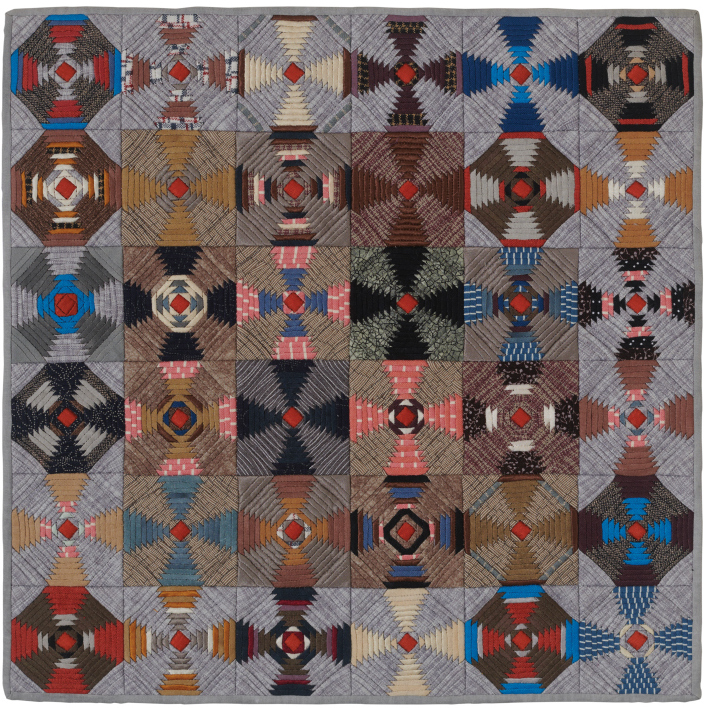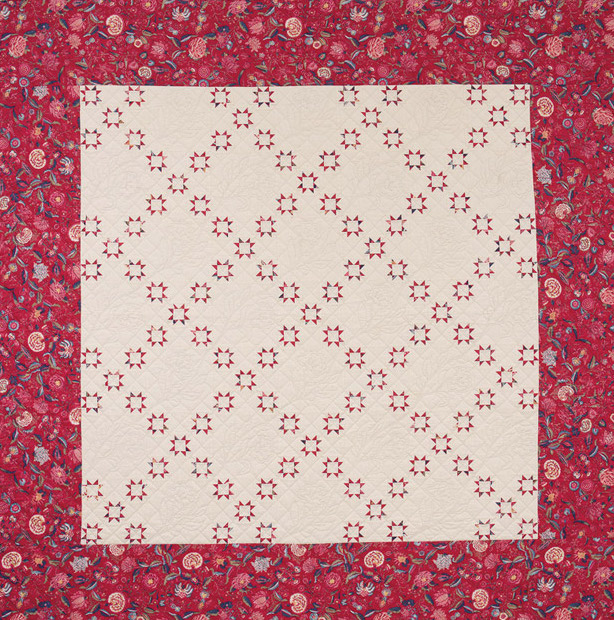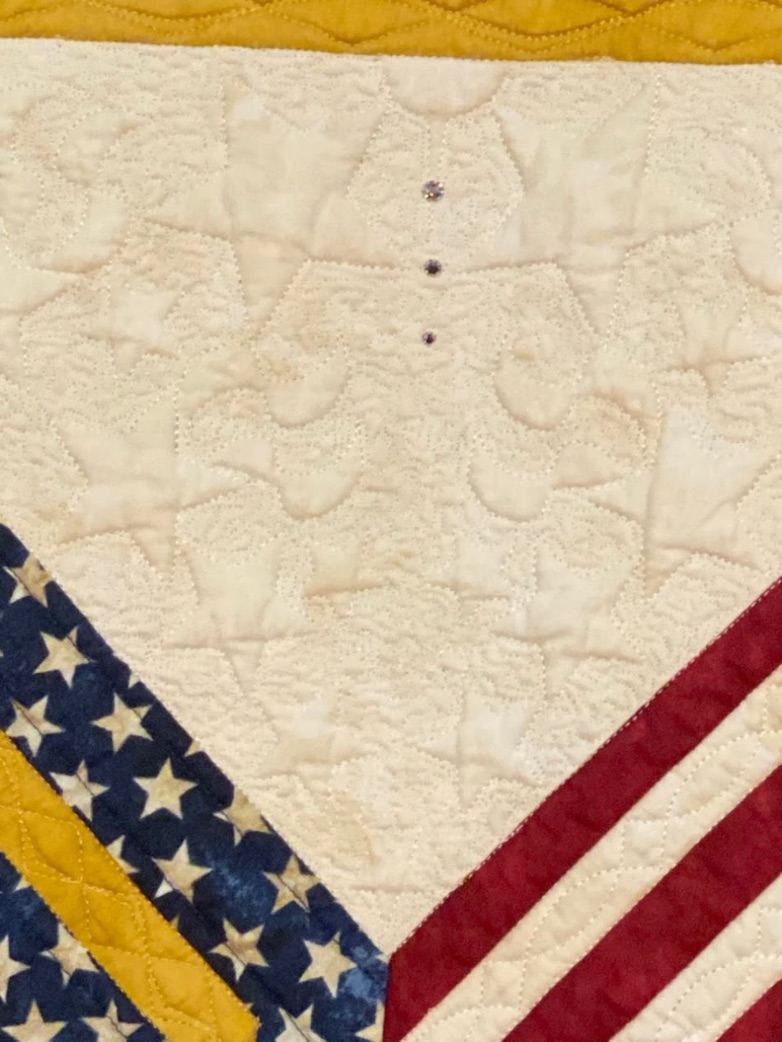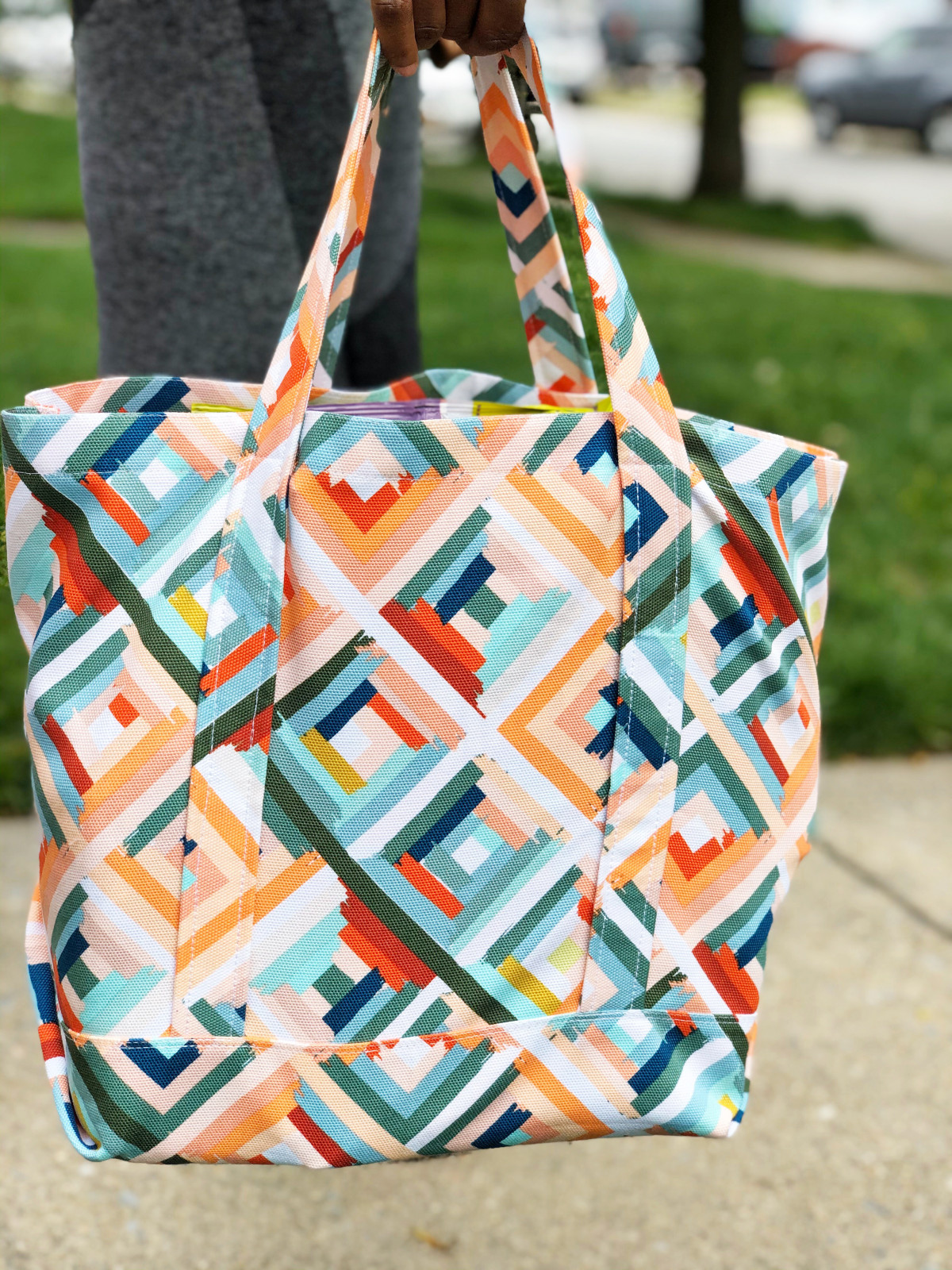 3
3

In this lesson, as we continue our look at Pattern (Lesson 35), which is the combining of elements or motifs in an arranged and repeated manner, we want to focus on how the Repetition of a pattern comes into play when making a quilt interesting. A pattern endlessly repeated without any change can, in some instances, become boring if one is not careful. On the other hand, when a pattern is varied, either by fabric, value, size, etc., the result can be quite stunning.
Let's use the example of the quilt Over the Waves by Setsuko Matsushima. The massive tsunami wave was created with hundreds of square in a square blocks.
Over The Waves by Setsuko Matsushima. (Image by TheQuiltShow.com)

While all of the blocks are pieced in the same manner, it's Setsuko's masterful use of subtle color shifts and fabric variations within each of the blocks that create the impact and motion of the waves as they approache the land. Had all of the "wave" blocks been pieced with the exact same fabrics, the resulting quilt would not have been nearly as successful.
This means that for the quiltmaker, it is important to consider both the design motif and how it will be used in the final quilt design.
Let's examine a number of quilts using pattern and repetition with very effective results.

Tula Pink's (Show 1406) grid layout in City Sampler uses both color and the variety of pattern within each block to move the viewer's eye across the quilt. View the quilt in detail here.

Lessa Siegele's (Show 1801) Ring Cycles is based on a Jack’s Chain block. The combination of nine-patch and equilateral triangles, along with unusual color placement, take the eye on a happy journey around the quilt. View the quilt in detail here.


Tight Pineapple by Amy Pabst is a miniature foundation pieced quilt from her series that explores the infinite design possibilities using the traditional Log Cabin block.
Tight Pineapple by Amy Pabst. (Image by AQS)
Mary Elizabeth Kinch (Show 1502) loves antique quilts, and often creates quilts using hundreds of incredibly tiny blocks. Founder of the SPA (Small Piece Aficionado) Society, she shares her method for creating visual interest and movement using pattern and repetition, as in her Guest Room Quilt below.

Repetition and Pattern
by Mary Elizabeth Kinch (Show 1502)
(All images by Mary Elizabeth Kinch, unless otherwise noted)
Repetition and Pattern are two principles of design that are inextricably linked. We can’t have pattern without repetition. They work to create structure, visual energy and unity. It‘s easy to see them at work in our quilts, where we most often see pattern first!
Pattern and repetition also create connection with the viewer. They propel our eyes around the work, our brains naturally seeking similarities. Patterning allows for multiple opportunities for our brains to gather information and find those similarities, drawing us deeper into the work as we do so. That’s what makes these two principles so powerful in design.
Repetition is a single design element repeated in a regular fashion throughout a work. The element can be shape, motif, value, line, texture, scale or colour. It can be exact, almost the same or a variation of the element. Think of repetition as the minimalist one. It energizes the work and gives the single element power by drawing attention and focus to it. When a single element is repeated it helps creates unity and stability in the composition. Broken line road markings are repetition.

One element, the star motif, is the hero of this composition and the power behind the design. The Irish chain arrangement makes it easy for the eye to follow the lines as our brain gathers the information about this composition.
Pattern is created when a combination of design elements are repeated in a regular fashion throughout a work. Think of pattern as the elaborate one! These elements together create consistency for the eye, unify and organize the work, and create a more complex visual arrangement. Regular patterns have strong visual impact, but an irregular pattern can be just as successful. Patterns can also be organic or geometric, repetitive or more random in their repetition; they can add texture and create mood.

Repetition and pattern are a dynamic duo! This lively quilt’s composition plays with repetition of motif, scale, and line; and includes irregular patterning of colours.

Look at the quilt on the left. What path is your eye taking? What elements are attracting your attention?
Pattern and repetition are key components and some of the first decisions made, along with finished size and colour, when planning a quilt. Go with the Flow was no different.
When I start a quilt I set up what I call design parameters. For Go With The Flow I first chose the technique (string piecing), layout (rectangles juxtaposed with squares) block colours (scrap and a specific palette), border colour (solid). I wanted the strong patterning of the 16 square blocks in a square layout, with sashing, to counter the “chaos” of the string piecing, scrap colours, and asymmetrical construction of the individual blocks. The regular patterning of the large blocks sends the first invitation for the viewer’s eyes to travel from block to block, seeking similarities.
Next I decided to create visual interest and complexity by using colour, asymmetry and balance along with irregular patterning of rectangular string-pieced strips in the blocks. That each rectangular strip is similar in shape but not identical keeps your eye moving, evaluating which one is the same, or bigger, or smaller. Don’t believe me that your eye and brain are doing that subconsciously? Just ask two six year olds which piece of pie they want at desert time! The disharmony of the uneven widths in the repetition of the string-pieced strips is unified by the shape and similar colour story.
Irregular patterning of the rectangle-ish (some have a bit of an angle!) string pieces continue to organize the design and add another layer of interest to the quilt. The varied “heights” of the individual “strings” invite a deeper look into the work. There are one or two strings that finish a mere 1/8” because it was the last piece of a favourite fabric and I just had to include it! Colour choices were consistent throughout the blocks and just a bit of cheddar orange and/or chrome yellow repeats in each, unifying and adding points of interest to draw the eye from one to another. Take them away and the quilt would fall a bit flat, even though there is lots of red packing a big visual punch. That’s the power of just a tiny bit.
Finally the rhythm of the repeated, varied, undulating quilting lines soften and counter the strong block pattern, unifying the overall design.
Have fun exploring the endless possibilities of repetition and pattern in your next quilt project!

Practice Exercise: Creating Pattern with Repetition
-
Create a Pattern & Repetition design using just one block from either: the Square in a Square set (Block 1) or Diamond in a Square (Block 2).
-
Create a Pattern & Repetition design using both blocks from either: the Block 1 set or Block 2 set.
Click here for more topics related to The Art of Quilt Design program


































 Have a plastic bag ban in your area? Follow
Have a plastic bag ban in your area? Follow 

.jpg)


